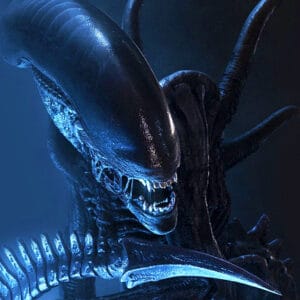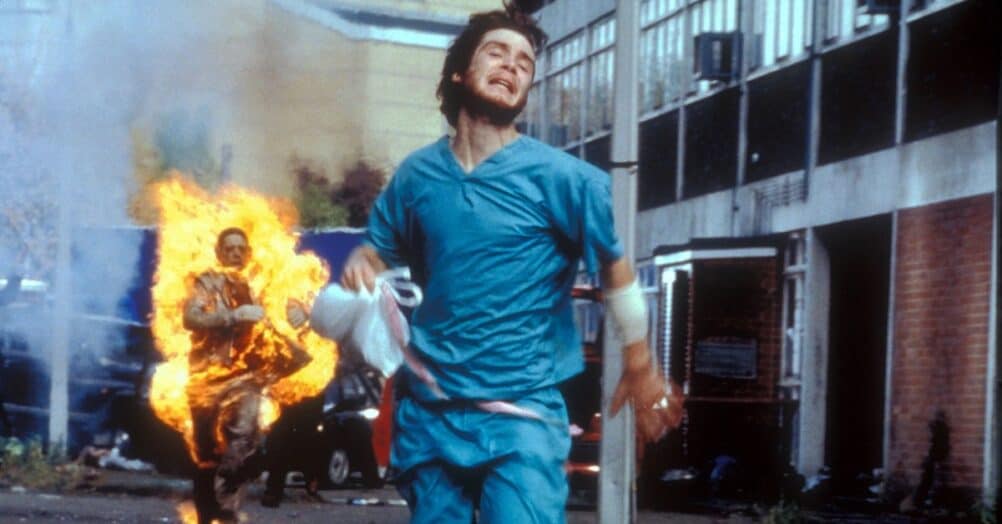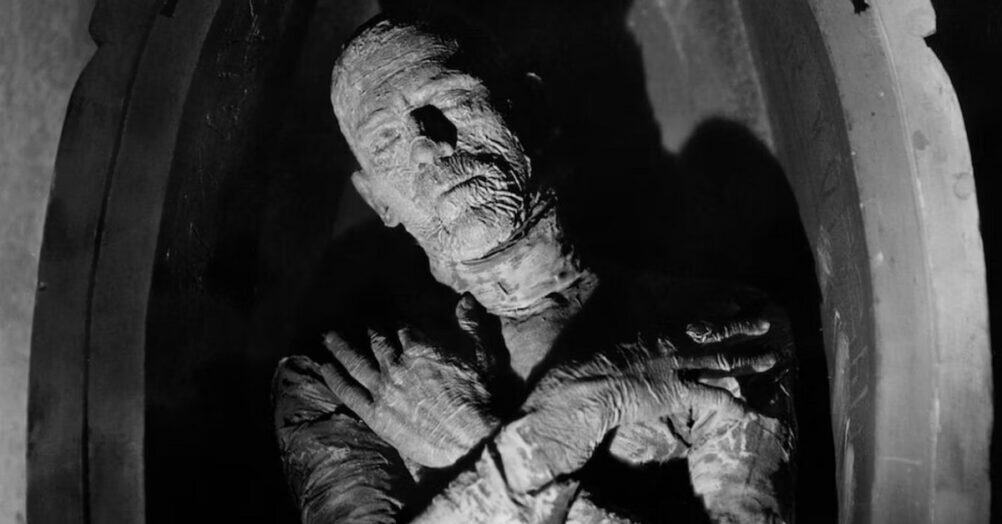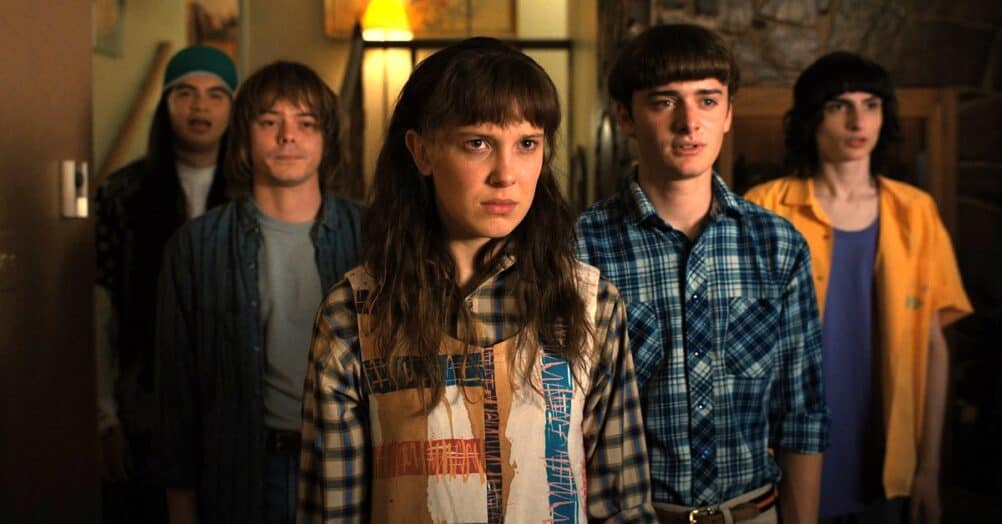Ink & Pixel is a source of pride and joy for me as a writer and as such, I’m always striving to take this column further for those who read and enjoy it. In an effort to widen the reach of our continuously growing fanbase, Ink & Pixel has been granted permission to broaden its horizons with the inclusion of films from the Horror, Sci-Fi, and Fantasy genres. I hope that you enjoy this bold new direction for the column. Additionally, if you yourself, or anyone you know, helped to make any of the amazing feature films found within this column, I would love to talk to you to further my knowledge. Please contact me at [email protected] so we can discuss it further.

Ahhhh, do you sense it? There’s a chill in the air, an aroma of fires burning in the distance, and a trembling in the earth beneath our feet as the bones of our buried dead rattle with excitement from within their graves. It can only mean one thing, that it’s the month of October, and the blessed day we’ve come to call Halloween is fast approaching. I’ve not a clue what your thoughts are on this spookiest of holidays, but I’m a man who still loves to get dressed up and paint the town blood red every October the 31st. With the spirit of Halloween alive and well inside of me, I thought it’d be fun if we tackled some Horror-related films for this month’s installments of Ink & Pixel. Are you with me? Good. Then grab your empty pillowcase and let’s start knocking on some proverbial doors, shall we?

I want you to think back to when you were a child, growing up in a world where some of Hollywood’s best and brightest aimed to scare the living daylights out of you. Who or what were the Horror icons that followed you into sleep and invaded your dreams, turning them into full-fledged nightmares? For the longest time – probably still to this very day – I have nightmarish dreams about the Xenomorphs from Ridley Scott’s ALIEN franchise. To be honest, I have such respect for what truly frightens me. With that in mind, I would like nothing more than to honor those terrifying creatures with an exploration of the film that taught us all this: in space no one can hear your scream.

Released on May 25th, 1979, ALIEN is a science fiction horror film directed by Ridley Scott (BLADE RUNNER, PROMETHEUS, GLADIATOR). With a story by Dan O’ Bannon and music by Jerry Goldsmith, this horrifying masterpiece of a space exploration mission gone wrong frightened the living daylights out of audiences all over the world, courtesy of 20th Century Fox. ALIEN, upon its release, re-defined the concept of terror on the silver screen, and eventually gave birth to three sequels that helped make it one of the most successful and celebrated franchises in cinematic history.

What’s that? You’ve never seen ALIEN before? Well, then allow me to give you the lowdown on what it’s all about. The film begins when a seven-member team of explorers aboard the commercial towing spacecraft, Nostromo, are awakened from hyper-sleep by their ship’s computer. Upon investigating the unscheduled disturbance, the team discovers that their computers have locked onto a distress transmission being sent from a nearby planet. Weyland Industries – the team’s employer – then orders them to investigate the origin of the signal, presumably with the interest of rescuing any crew members who might be stranded, out in the cosmos. It’s a nice thought, right? Well, things are about to go dreadfully wrong.

After the team touches down on the all but dead planetoid, they find that the transmission is in fact coming from an abandoned alien spacecraft. Investigating the foreign vessel, Kane (John Hurt) – a member of the Nostromo crew – discovers a chamber which contains a number of strange egg-like objects. Foolishly, Kane moves to inspect one of the eggs, when it suddenly opens and a spider-like creature leaps upward in attack. Panic sets in and, with no time to lose, crew members Ripley (Sigourney Weaver), Dallas (Tom Skeritt), Lambert (Veronica Cartwright), Brett (Harry Dean Stanton), Ash, (Ian Holm), and Parker (Yaphet Kotto) are rushing Kane back aboard the Nostromo. Sadly, none of the members are aware that by doing so they’ve brought an alien creature of unimaginable terror aboard their ship.

Good grief, where should I even begin? I know, let’s get a little “origin story” action happening. The seed of what would eventually become the story for Ridley Scott’s ALIEN began when the film’s writer, Dan O’ Bannon, met with director John Carpenter while attending classes at the USC Department of Cinematic Arts in Southern California. While there, Carpenter approached O’ Bannon about becoming a collaborative writer on his Master’s Thesis film project: a science fiction comedy student-feature called DARK STAR. O’ Bannon agreed, but before long, the production costs on DARK STAR grew far beyond that of your typical student film. As luck would have it, however, Carpenter and O’ Bannon then received additional funding to help finish the picture courtesy of Jack H. Harris Enterprises – a production house responsible for films such as BEWARE! THE BLOB, HONKY, and THE COLUMBUS OF SEX.
What does all of this have to do with ALIEN you might ask? Well, suffice it to say that O’ Bannon, although grateful for the opportunity to work with Carpenter, felt as if his ideas used in the writing of DARK STAR would be better served as a Horror film. As a result, O’ Bannon went to work with his friend Ronald Shusett on creating a new script, and when the time came to work with Ridley Scott on ALIEN, his ideas for a space exploration epic were more than ready to terrify audiences to their core.

Originally, the script for ALIEN was written as having an all male cast of characters. Luckily, the overall wording of O’ Bannon and Shusett’s words didn’t read so much as male specific as it did non-descript. Let’s just stop right here, and take a moment to consider what ALIEN would have been like without the spellbinding Sigourney Weaver cast in the role of Ripley. Had enough yet? Yeah, I know, that was dirty pool on my part, asking you to think such a thing. Forgive me? Thanks, you’re awesome. If it’s any consolation, O’ Bannon and Shusett knew that the film’s producers at 20th Century Fox might not see the commercial appeal of ALIEN if it were to call for an all male cast. Thus, located at the bottom of the script’s final page was this statement about its characters – The crew is unisex and all parts are interchangeable for men and women. A brilliant move indeed.

Once ALIEN found a home with 20th Century Fox, it was then time to assign a director to the ambitious, effects-laden interstellar romp. Originally, O’ Bannon assumed that he would be the one to direct the film, though it would appear as if Fox had other plans. First, they tapped one of the film’s producers, Walter Hill, to direct the picture. However, Hill quickly declined, stating that he had both commitments to other film projects as well as trepidation about being behind the camera of a project which called for a plethora of special effects. Looking to find a quick and educated solution to the movie’s director problem, producers Gordon Carroll, David Giler, and Walter Hill contacted an up-and-coming visionary by the name of Ridley Scott, whose directorial debut for Paramount Pictures’ historical drama THE DUELLISTS had left a lasting impression on each of them. With Scott ready and willing to accept, the journey to crafting one of science fiction’s greatest cinematic achievements had truly begun.

This seems like a good as time as any to speak on the film’s art design and the work of H.R. Giger. O’ Bannon had first discovered Giger’s disturbing and unique art during his time in Paris, France, when working on Alejandro Jodorowsky’s film adaptation of Frank Herbert’s DUNE. When remarking on what drew him to Giger’s nightmarish style, O’ Bannon had this to say about the disturbed Swiss artist, His paintings had a profound effect on me. I had never seen anything that was quite as horrible and at the same time as beautiful as his work. And so I ended up writing a script about a Giger monster.” The monster to which O’ Bannon is referring is, of course, the Xenomorph, a humanoid monstrosity that is prominently featured in Giger’s painting entitled Necronom IV.

When looking back on the ALIEN franchise, Giger is often only credited with having designed the Xenomorph creature, when in actuality he contributed far more than that. For the making of this first installment of the ALIEN series, Giger could be found on-set, everyday; sculpting, painting, and building all of the alien-related sets by hand. In addition to the bio-mechanical atmosphere of the alien ship, Giger also designed the many incarnations of the Xenomorph creature: the Facehugger, Chestburster, and finally, the full-grown Xenomorph. Today, every evolutionary state of the Xenomorph creature is celebrated in our pop culture. Go to any geek-related website and you’ll find everything from chestburster t-shirts to facehugger hand puppets.

I don’t know about you, but one of the many reasons why ALIEN continues to fascinate me after all these years is its approach to practical special effects. In recent times, science fiction and horror films tend to rely on computer generated images to instill fear in their audiences. That’s all well and good, but much like the beauty of a fully operational Jim Henson puppet, there’s nothing like the real thing. I’ll give you an example. Are you ready for this? Just the head of the adult Xenomorph had a total of 900 working parts and points of articulation moving inside of it! It makes you wonder how they had enough room to fit an actor in that suit!

Speaking of which, I want to give ample credit to Bolaji Badejo, whose 6-foot-10-inch frame managed to manipulate what, in my estimation, is one of the most complicated body suits ever worn. In an effort to give the creature’s movement a sense style, Badejo based many of its motions upon exercises found in the ancient art of Tai-Chi. It was important to Scott, and everyone else involved in the making of ALIEN, for their audience to understand that the Xenomorph is a creature of intelligence and grace. Contributing to the brilliant performance of the creature throughout the film were stuntmen Eddie Powell and Roy Scammell, whose expertise in the art of stunt performance was used in the filming of some of the creatures more compromising and kill-related scenes.

ALIEN, upon its initial theatrical release, earned a worldwide total of $104,931,801. That number should speak for itself, but suffice it to say that the movie was a colossal hit with damn near everyone who had the daylights scared out of them upon viewing it. Additionally, as you well know, the ALIEN franchise continued to grow exponentially beyond the success of this first film. The sequel, ALIENS, is considered by many to be the best of the series, with ALIEN 3 and ALIEN: RESSURECTION being considered solid follow-ups to this most beloved of science fiction horror properties. Yeah, I know what you’re about to say, and no, we will not speak on those abominable ALIEN VS. PREDATOR films. In fact, let’s just pretend that they don’t exist.

To be honest with you, I could write 3 or 4 more Ink & Pixel articles based solely upon this film if I wanted to. Seriously, the in-depth information available for it is seemingly endless. I can only hope that what I’ve written here has entertained you and reminded you of just how vast of an achievement this film truly is. For me, ALIEN is an experience that will continue to live on inside of me as one of the single greatest achievements in science fiction and horror filmmaking history. Oh, what I wouldn’t give to have every living member of the original cast and crew return for just one more foray into deep space; to eradicate the most terrifying alien threat ever, once and for all.




















Follow the JOBLO MOVIE NETWORK
Follow us on YOUTUBE
Follow ARROW IN THE HEAD
Follow AITH on YOUTUBE